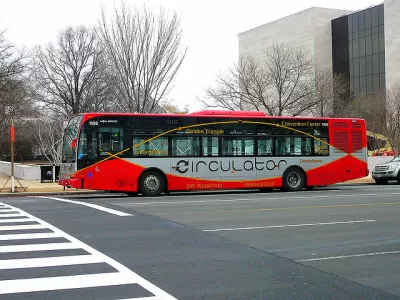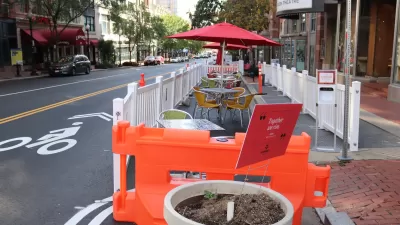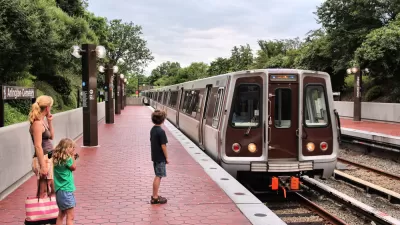The well-documented problems facing the D.C. Circulator bus system came to head earlier in July.

"The District will take over direct management of its troubled D.C. Circulator bus system, clearing the way for Metro to remove itself from responsibilities it assumed in 2005 when the bright red buses first appeared on city streets," reports Martin Di Caro.
The decision appears to be the final chapter of Metro's role with the beleaguered bus line. Here, Di Caro explains the current arrangement, which will no longer include Metro by July 1, 2018:
Metro’s pending exit promises to simplify a complicated management structure. Since the Circulator’s inception, DDOT has owned the fleet and set routes, schedules, and fares. Metro has been in charge of on-the-ground oversight of its contract with First Transit, frequently docking the company payments for failing to meet the daily quota of operational buses. First Transit operates the system, responsible for hiring and training drivers and mechanics.
Dan Malouf documented the shortcomings of the arrangement in a separate article published earlier in July, as did Di Caro in another article in May.
Despite the new arrangement, DDOT is not promising service improvements on the line just yet, reports Di Caro.
FULL STORY: District To Replace Metro In Direct Control Of Troubled D.C. Circulator

Alabama: Trump Terminates Settlements for Black Communities Harmed By Raw Sewage
Trump deemed the landmark civil rights agreement “illegal DEI and environmental justice policy.”

Study: Maui’s Plan to Convert Vacation Rentals to Long-Term Housing Could Cause Nearly $1 Billion Economic Loss
The plan would reduce visitor accommodation by 25% resulting in 1,900 jobs lost.

Why Should We Subsidize Public Transportation?
Many public transit agencies face financial stress due to rising costs, declining fare revenue, and declining subsidies. Transit advocates must provide a strong business case for increasing public transit funding.

Paris Bike Boom Leads to Steep Drop in Air Pollution
The French city’s air quality has improved dramatically in the past 20 years, coinciding with a growth in cycling.

Why Housing Costs More to Build in California Than in Texas
Hard costs like labor and materials combined with ‘soft’ costs such as permitting make building in the San Francisco Bay Area almost three times as costly as in Texas cities.

San Diego County Sees a Rise in Urban Coyotes
San Diego County experiences a rise in urban coyotes, as sightings become prevalent throughout its urban neighbourhoods and surrounding areas.
Urban Design for Planners 1: Software Tools
This six-course series explores essential urban design concepts using open source software and equips planners with the tools they need to participate fully in the urban design process.
Planning for Universal Design
Learn the tools for implementing Universal Design in planning regulations.
Smith Gee Studio
Alamo Area Metropolitan Planning Organization
City of Santa Clarita
Institute for Housing and Urban Development Studies (IHS)
City of Grandview
Harvard GSD Executive Education
Toledo-Lucas County Plan Commissions
Salt Lake City
NYU Wagner Graduate School of Public Service





























